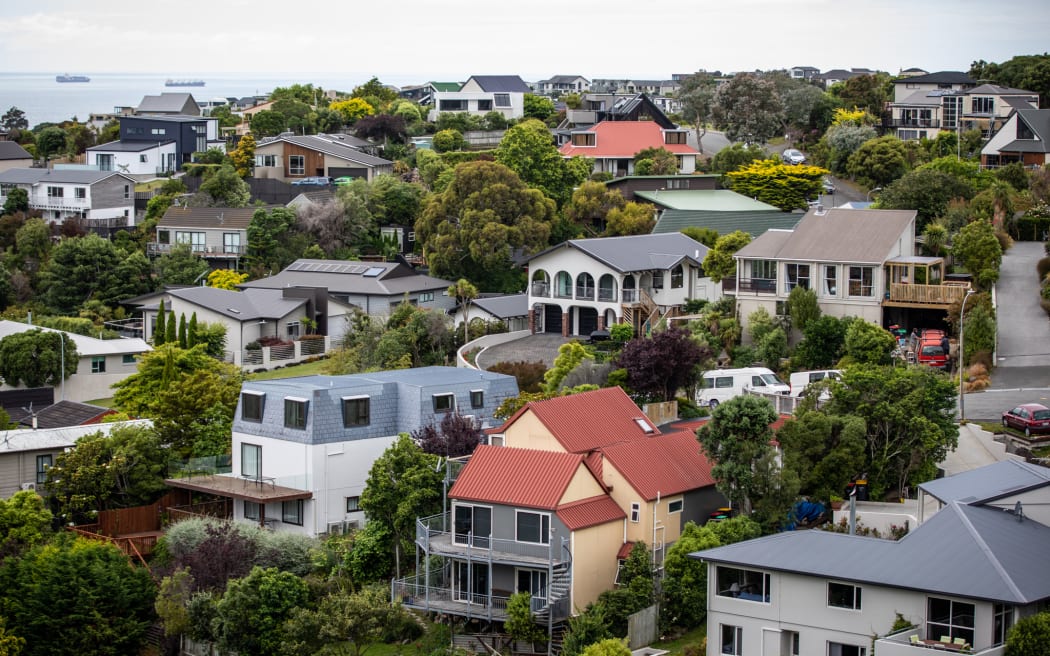Business
New Zealand Housing Market Shows Mixed Signals Amid Changing Trends

New Zealand’s housing market has experienced a tumultuous year, marked by fluctuating sales activity and varied house values. As of September 2024, the Real Estate Institute reported that while sales figures have risen, median house prices have largely remained stagnant or slightly decreased. The landscape is shifting, however, with forecasts suggesting that declining interest rates may lead to more significant price increases in the near future.
Sales Activity Shows Improvement
Data from the Real Estate Institute indicates a total of 6,346 property sales across New Zealand in September, reflecting a 3.1 percent year-on-year increase. Excluding Auckland from the analysis, the sales growth rises to 7.5 percent. Notable regional increases included a remarkable 56 percent surge in the West Coast, 37.1 percent in Marlborough, and 32 percent in Nelson. While there was a slight month-on-month dip in activity, seasonal adjustments showed that the national median time to sell a property decreased by six days compared to 2024, now averaging 43 days.
House Prices Show a Mixed Picture
The median house price across New Zealand fell by 12.5 percent over the past year to $770,000. In contrast, Auckland’s median price saw a modest increase of 0.8 percent to $978,000. Remarkably, two regions—West Coast and Southland—recorded their highest median prices ever, with the former rising by 14.6 percent to $447,000 and the latter by 7.8 percent to $525,000.
Lizzy Ryley, Chief Executive of the Real Estate Institute, remarked that this marks the first time in over three years that two regions achieved record median prices within a single month. The house price index, which adjusts for sales variations, indicated a slight increase of 0.8 percent for the month, but a mere 0.2 percent rise over the year. Economists from ANZ noted that when seasonally adjusted, there has been minimal movement in prices over the year.
In Auckland, some areas continue to experience price declines, with Rodney and Papakura seeing falls during September. Ryley described the overall price situation in Auckland as stable, while other regions displayed varying trends. Whangarei increased by 4.3 percent in September, while Hamilton decreased by 0.3 percent but is up 1 percent over the year. Tauranga recorded a 0.6 percent increase for the month and a 3 percent increase year-on-year.
Wellington saw a decline of 0.7 percent for September and 2.6 percent over the year, with Porirua facing particular price weaknesses. In contrast, Christchurch experienced a 1.1 percent rise for the month and a 3.9 percent increase compared to last year, while Queenstown recorded a 2.5 percent uptick for September and 5.1 percent rise since 2024.
ANZ economists predict that house prices will remain relatively flat through the remainder of 2025 due to weak short-term momentum, high inventory levels, and a soft job market, despite the positive influence of lower interest rates. They anticipate a gradual recovery, projecting house prices could rise by approximately 5 percent in 2026, supported by an expected official cash rate of 2.25 percent by the end of that year.
Increasing Listings and Positive Market Sentiment
The number of properties available for sale has also seen an increase, providing buyers with additional options. The Real Estate Institute recorded 9,394 new listings in September, representing a 1.3 percent rise from the previous year. Overall, the total number of available properties reached 30,721, marking a 2.3 percent year-on-year increase.
Ryley noted a positive shift in market sentiment, stating, “Some local salespeople are reporting a noticeable lift in activity across the market, with first-home buyers and owner-occupiers still the most active participants.” The recent decrease in the official cash rate by 50 basis points is likely to influence further interest rate reductions, and with the approaching spring season, there is cautious optimism that sales activity will strengthen through spring and into summer.
Despite this optimism, Ryley acknowledged that buyers are proceeding with caution, particularly in markets where prices are elevated. She reflected on the current stability of prices, saying, “You’re not in a position where you’re thinking ‘do I have to buy right now’ because there’s an upward trajectory.” Recent surveys from ASB indicate that many potential buyers perceive this as a favorable time to enter the housing market.
As the New Zealand housing market navigates these mixed signals, the interplay of sales activity, pricing trends, and buyer sentiment will play a crucial role in shaping its future landscape.
-

 World6 days ago
World6 days agoPrivate Funeral Held for Dean Field and His Three Children
-

 Top Stories1 week ago
Top Stories1 week agoFuneral Planned for Field Siblings After Tragic House Fire
-

 Sports3 months ago
Sports3 months agoNetball New Zealand Stands Down Dame Noeline Taurua for Series
-

 Entertainment3 months ago
Entertainment3 months agoTributes Pour In for Lachlan Rofe, Reality Star, Dead at 47
-

 Entertainment2 months ago
Entertainment2 months agoNew ‘Maverick’ Chaser Joins Beat the Chasers Season Finale
-

 Sports3 months ago
Sports3 months agoSilver Ferns Legend Laura Langman Criticizes Team’s Attitude
-

 Sports4 weeks ago
Sports4 weeks agoEli Katoa Rushed to Hospital After Sideline Incident During Match
-

 Politics2 months ago
Politics2 months agoNetball NZ Calls for Respect Amid Dame Taurua’s Standoff
-

 World2 weeks ago
World2 weeks agoInvestigation Underway in Tragic Sanson House Fire Involving Family
-

 Entertainment3 months ago
Entertainment3 months agoKhloe Kardashian Embraces Innovative Stem Cell Therapy in Mexico
-

 Sports4 weeks ago
Sports4 weeks agoJamie Melham Triumphs Over Husband Ben in Melbourne Cup Victory
-

 World4 months ago
World4 months agoPolice Arrest Multiple Individuals During Funeral for Zain Taikato-Fox



















